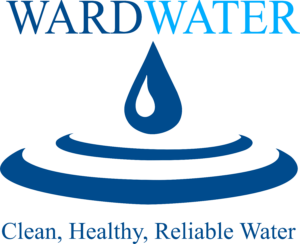Got the water pressure blues? You’re not alone. Imagine, it’s been a long day at the office. You leave work, go to the kids practice, stop at the store, then come home to start the evening rituals: homework, dinner, clean-up, baths for the kids, pick up the house, emails and if time allows, a nice hot relaxing shower before settling down for the evening.
You turn on the faucet and instead of getting a powerful burst of soothing hot water, what comes out is more like a drool than an actual shower. Sound familiar?
Read forward and we’ll tell you the 3 most usual suspects when it comes to getting rid of the water pressure gremlins.
1. YOUR PRESSURE TANK
Water pressure tanks are the work horse of a home’s water supply (assuming you’re on a well). They basically take the workload off from your well’s submersible pump. The water pressure tank holds a pressurized supply of water so you’re well pump kicks on and off less often.
Well pumps by nature are expensive to replace and they’re finicky; they like to be either on or off. They don’t like going back and forth a lot. Turning them on and off a lot burns them out quicker.
The brains of your home’s water supply is the pressure tank’s water pressure switch. The water pressure switch talks to the pump down in the well and tells it when the pressure tank is low and says “hey, the folks upstairs are taking a shower, I’m low…send me some more water!”
The typical problem: The switch is improperly sized or set to too low of a setting. Switches run on a “low” and a “hi” range measured in pounds per square inch (p/si). The most common switches are 30/50, 40/60 or even 50/70 p/si. The lower the p/si range on your water pressure tank’s switch, the lower your home’s water pressure or water flow will be. The higher the range…well, you get the picture.
*Note: you’ll want to verify that your current pressure tank is sized appropriately if making changes to the range on your pressure switch. Your treatment professional should be able to answer this for you.
Feel free to visit our page on water supply systems or you can contact us with additional questions.
2. HARDNESS and WATER SEDIMENT
A home’s water pressure can be DRASTICALLY reduced by mineral deposits. These deposits attach themselves to your home’s plumbing, faucets, heating systems and appliances. Hardness (Calcium), Iron, Manganese and even simple sediment particles can raise havoc on a home’s water pressure.
Not only can these contaminants cause issues with water pressure, they can also deplete your checking account in a hurry! As little as only 1/8 of an inch of Hardness buildup on the inside of water heater coils can reduce heating efficiency by as much as 30%, boosting heating bills and making it far more difficult for a home to provide water pressure and warmth.
Water stains on sinks, showers, appliances, clothing and even hair are a good indication that you have minerals in your water. If you haven’t done so already, it might be a good time to have your water tested for minerals.
3. CLOGGED WATER FILTER
Many homes have a sediment cartridge filter just after the water pressure tank. These small filters typically have in them some sort of paper or granulated filter unit designed to capture small amounts of mineral and sediment particles before they can enter home’s water supply. These filters can greatly affect water pressure.
Problem 1: The filter cartridge hasn’t been changed in a while.
Once a filter has been clogged, water pressure in a home can drop like a lead balloon. The water just simply can’t make its way through the clogged pores of the filter. Before you know it you’re kitchen faucet has little more than a trickle coming out.
It’s a good practice to plan on changing out your filter at least once every 30 days, or at minimum when the filter inside starts to look discolored.
Problem 2: The filter cartridge can’t handle the AMOUNT of minerals or sediment in you water.
Much like in Problem 1 above, when mineral contaminants are to high, the “water highway” becomes traffic jammed and the desired water just simply can’t make it its destination at full speed.
If your well’s water supply is too high in minerals such as Hardness, Iron or Manganese a small sediment cartridge unit most likely isn’t going to cut the mustard.
If you don’t know how concentrated the minerals in your water are, it might be time to start thinking about performing a simple in home water test.
For more information on water testing and private wells, visit the State of Maine’s page on Water Testing.
IN SUMMARY
If you are unhappy with your home’s water pressure our best advice to you is:
- Find out what size pressure switch is controlling your water pressure tank. If it’s too small, consider replacing it with a higher rated switch.
FYI, it’s a very good idea to have your water pressure tank checked to make sure it’s still working properly. Once a tank has started to fail (typically after about 10 years or so) the well pump down in your well will be working overtime…and possibly be living on BORROWED TIME. Changing out a submersible well pump can be a costly proposition.
- Check your sediment cartridge filter to make sure it isn’t clogged.
- Have your water tested for minerals, if you haven’t done so already.





